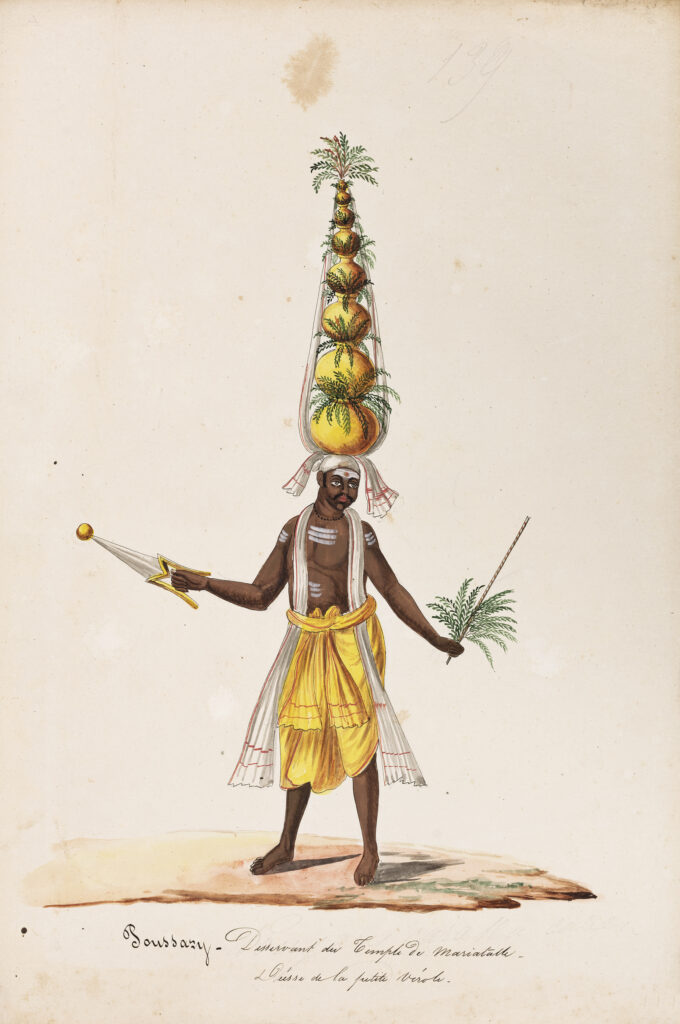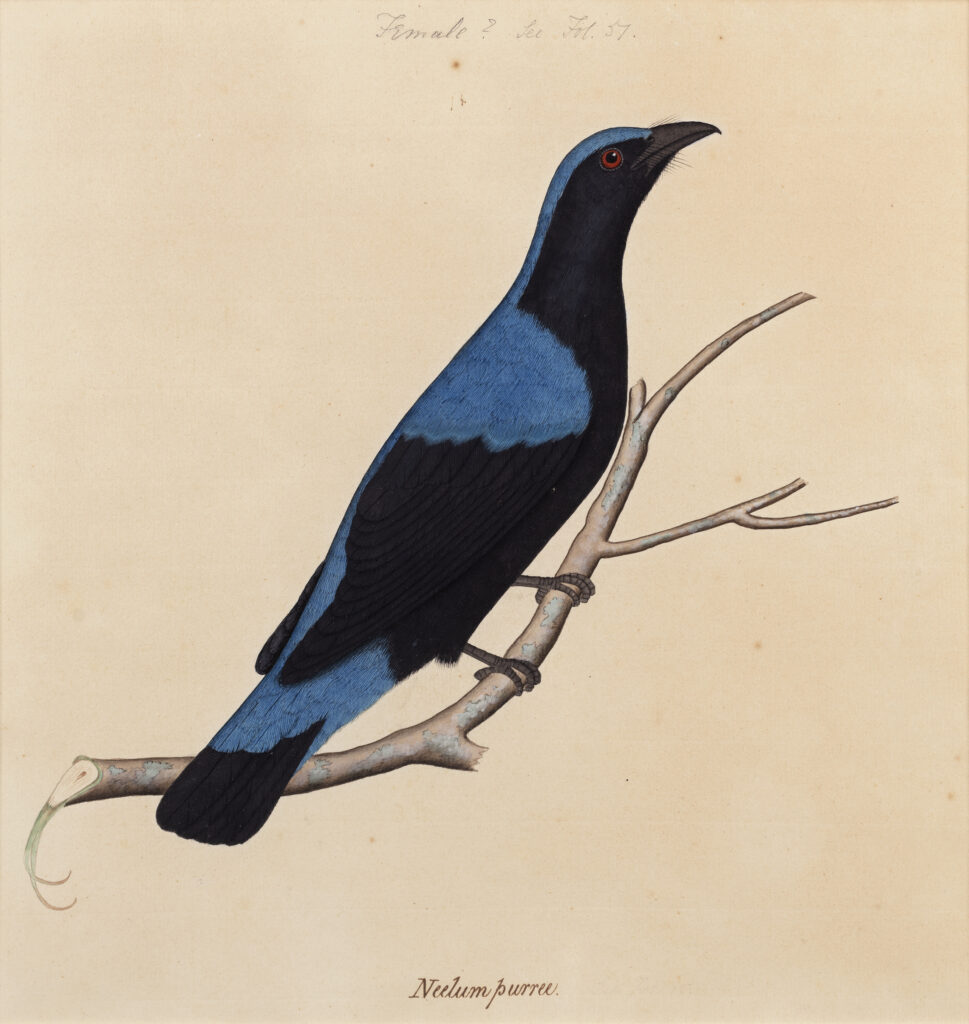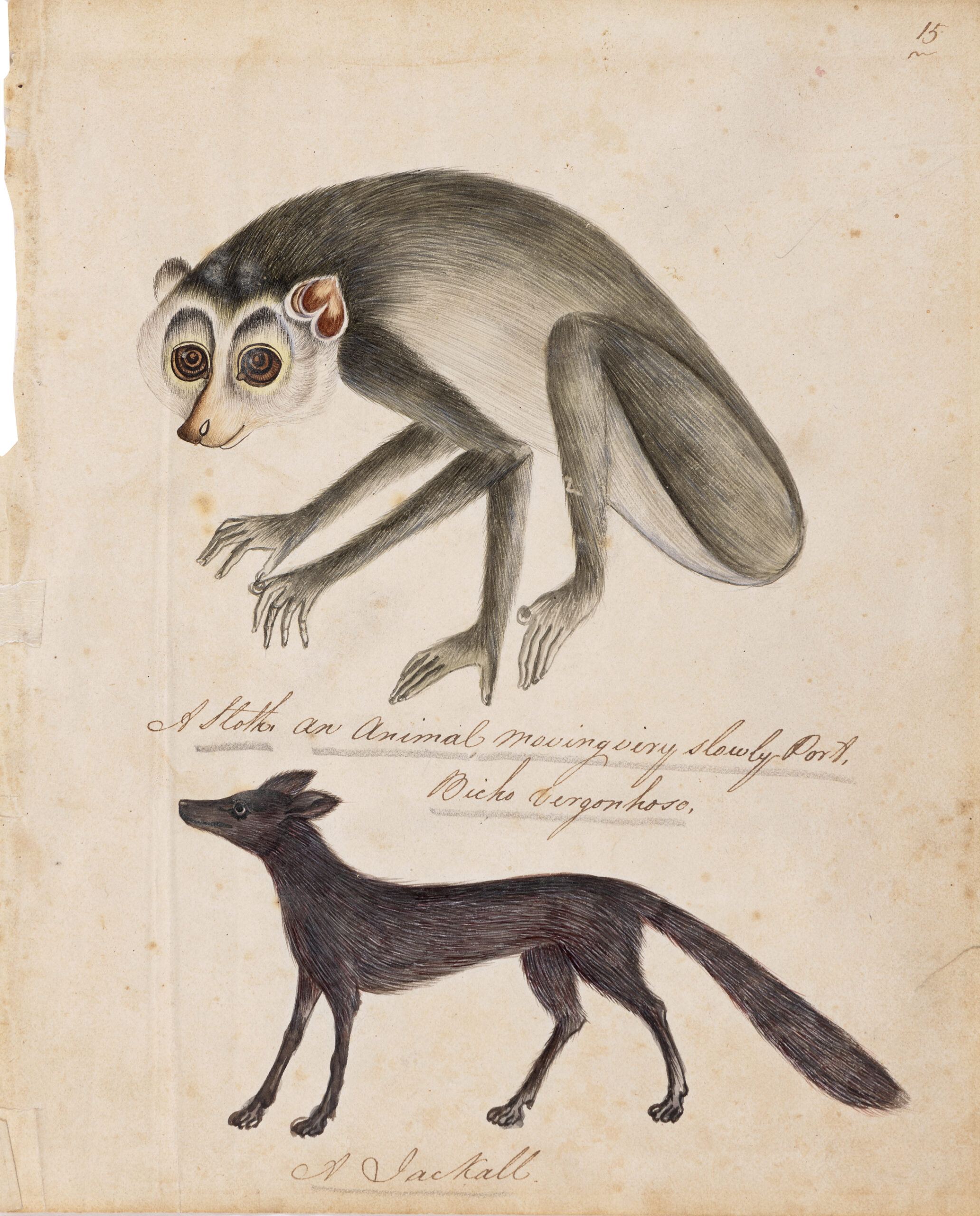
In keeping with its commitment to honour the unknown Indian masters commissioned by the East India Company in the late 18th and early 19th centuries, DAG, India’s premier art company, dedicates an exhibition to Company Paintings entirely from the gallery collection. Curated by Giles Tillotson, SVP, DAG, A Treasury of Life: Indian Company Paintings, c. 1790 to 1835 looks at how Indian artists responded to the demands of their patrons, creating entirely new templates of Indian art. With two hundred works of art, it is the largest exhibition in India showcasing the diversity of Company Paintings and artistic brilliance of Indian painters. Opening in collaboration with the Department of Tourism, Government of Goa, on 1 December 2025 at Aguad Port & Jail Complex, Goa, it will remain on view until mid-January 2026.
Company painting has long existed on the margins of Indian art history—too late to be considered part of the classical court tradition and too early to fit within the narrative of modernism. Yet, A Treasury of Life challenges that perception, proposing Company painting as a crucial prelude to Indian modernism. By showcasing works that blend Indian artistic heritage with Western influences, the exhibition reveals how Indian painters actively engaged with changing patronage, techniques, and visual traditions, making this one of the most dynamic periods in Indian art.
It explores three primary categories: natural history, capturing India’s flora and fauna with scientific precision and artistic sensitivity; architecture, documenting historic sites and cityscapes with a striking blend of Indian and European techniques; and Indian manners and customs, portraying traders, artisans, religious figures, and sacred idols in vivid detail. Reflecting the European desire to document an unfamiliar land and the ways in which Indian artists responded with ingenuity, adapting their skills to new formats and audiences, A Treasury of Life underscores the fragility of the worlds they depicted.
Whether in the delicate rendering of a now-endangered plant species, the careful documentation of architectural heritage, or the detailed portrayals of social customs, these paintings hold historical value not just as art, but as windows into a past that, in many ways, no longer exists. Beyond botanical studies, Company paintings also provide an unparalleled visual record of India’s natural environment and wildlife, many of which have undergone significant changes over the centuries.
These works serve as historical snapshots of a time when India’s diverse ecosystems were still largely intact, offering glimpses of species and landscapes that have since been altered due to urbanisation and environmental changes.
Ashish Anand, CEO and MD, DAG, notes, “We are delighted to bring A Treasury of Life, an extraordinary exhibition of hitherto neglected Company Paintings, to Goa as part of our long-standing commitment to provide a platform for pre-modern and hybrid art practices that laid the foundation for Indian modernism to thrive. Beginning with our sponsorship of Forgotten Masters: Indian Painting for the East India Company at the Wallace Collection in 2019—the first significant exhibition on Company Paintings in the UK—DAG has since presented Birds of India, a pioneering exhibition dedicated to the genre, across three Indian cities. A Treasury of Life expands this conversation to highlight the full scope of Company Painting and its significance in the evolution of Indian art.”
Kedar Naik, Director of Tourism, Goa, said, “Goa has always taken pride in championing initiatives that celebrate India’s cultural and artistic legacy. Hosting A Treasury of Life at Aguad Port & Jail Complex reflects our commitment to positioning Goa as a centre for heritage-led experiences and meaningful cultural engagement. This exhibition not only honours the brilliance of Indian artists who shaped an important chapter of our visual history, but also strengthens our resolve to promote immersive cultural tourism that goes beyond beaches and introduces travellers to India’s diverse artistic traditions. We are pleased to partner with DAG in bringing this landmark showcase to Goa and look forward to welcoming audiences from across India and the world.”
Savio Mathias, VP Operations and Business Development, Aguad Port and Jail Complex, added, “It is a privilege for Aguad Port & Jail Complex to host A Treasury of Life and to collaborate with DAG in presenting an exhibition of such cultural depth. Aguad has always stood as a symbol of Goa’s layered history, and it is deeply meaningful for us to see this iconic space become a platform for celebrating India’s artistic legacy. This landmark showcase brings an extraordinary chapter of India’s artistic history to the shores of Goa and supports our vision to develop Aguad as a vibrant cultural destination where heritage, learning, and artistic engagement come together for the public.”
While many Company artists remain unnamed, this exhibition presents works by recognised masters such as Sita Ram, Sewak Ram, and Chuni Lal. Though it is known that European patrons provided these artists with Western models to guide them, the point is seldom demonstrated. Works by European artists like James Forbes, F.B. Solvyns, and Charles Gold help understand the kind of material Company artists would have had at their disposal. Rather than tracing direct influences, these references shed light on the broader visual culture of the time—one where Indian artists engaged with foreign patrons to create something entirely new.
More than a historical survey, A Treasury of Life repositions Company painting as an essential part of India’s artistic journey. It captures a moment when Indian painters moved beyond royal commissions to embrace new patrons, subjects, and styles—laying the foundation for future shifts in Indian art. In doing so, the exhibition not only celebrates a vital chapter in history but also invites fresh perspectives on how we understand the beginnings of modern art in India.
With an introductory essay by historian and curator Giles Tillotson, the accompanying publication carries contributory essays by scholars and experts. Apurba Chatterjee (University of Reading) and Nicolas Roth (Harvard University) explore Natural History while Malini Roy (the British Library) and Rosie Llewellyn-Jones investigate architecture and landscape and Jennifer Howes (Royal Asiatic Society) writes on customs and trades.
About DAG
Established in 1993 as an art gallery, DAG has grown exponentially to become India’s leading art company with a comprehensive collection starting from the eighteenth century onwards. From acknowledging recognised masters to restoring the legacies of generations of artists marginalised over time, from acquiring the custodianship of artists’ studios and estates to bringing back to India works associated with Indian art and heritage from overseas, DAG has revisited the history of three centuries of Indian art practice with a repository of artists that, taken together, tell the story of Indian art.
In the over three decades since DAG’s foundation, the Indian art world has seen far -reaching changes in which the company has played a stellar role. Its iconic exhibitions that are curated to provide historical overviews have brought to the fore important artists neglected through the passage of time while also documenting critical art movements and collectives. New generations of art lovers have been able to reclaim the inheritance of forgotten masters through DAG’s pathbreaking curations at its galleries as well as participation in international art fairs, and collaborations with museums and cultural institutions in India and abroad.
At the heart of the company’s programming is ongoing curatorial enquiry and exploration for its exhibitions, a rigorous publishing calendar with an impressive library of books to document Indian art history; a museum programme-focussed at engaging the public to increasingly democratise its outreach; commissioning of videos and films in relation to artists and their work; and engagements with artists, critics and the art community at large. Through these initiatives, DAG remains steadfast in its commitment to foster an appreciation for, and the dissemination and promotion of Indian art.
An important aspect of the company’s collaborative efforts has been to work with institutions and museums, whether for hosting DAG-organised exhibitions or for establishing immersive public-private museum exhibitions such as those undertaken at Delhi’s Red Fort (Drishyakala) and Kolkata’s Old Currency Building (Ghare Baire) with the Archaeological Survey of India. Set up as museums, these exhibitions ran for periods of three years and two years, respectively, garnering an amazing response from large numbers of viewers.
DAG recently acquired Jamini Roy’s studio-cum-house in Kolkata and is in the process of setting up its first single-artist museum dedicated to the National Treasure artist. It has galleries in Mumbai, New Delhi and New York.
Website: www.dagworld.com | Facebook: @dagworld | Instagram: @dag.world
About Aguad Port And Jail Complex
Aguad, derived from the Portuguese words “Agua” (water) and “Da” (gives), was built in 1612 as a strategic defence fort against Dutch and Maratha fleets. Positioned near the prosperous trading zones of Old Goa and Panaji, it functioned as a busy port with a customs house, jetty, and warehouses. Known for its natural freshwater aquifer and rainwater harvesting system, it offered the highest water-replenishment capacity in Asia.
In the 1930s, under Portuguese Prime Minister António de Oliveira Salazar, Aguad was transformed into a prison for political dissidents. This marked a grim phase in its
history, remembered for harsh imprisonment and the suppression of those who resisted the regime.
Aguad played a significant role during Goa’s liberation in 1961, when the Indian Armed Forces carried out Operation Vijay and Operation Chutney, India’s first integrated tri-service operation. Two Indian soldiers lost their lives at Aguad’s gates while attempting to free freedom fighters like T. B. Cunha and Ram Manohar Lohia. After liberation, the fort served as Goa’s central jail until 2015.
Digitally inaugurated by Prime Minister Narendra Modi on 19 December 2021, the Aguad Port and Jail Complex today stands as a vibrant cultural and historical hub. With museums, performances, exhibitions, markets like the Aguad Fete, and panoramic views of the Arabian Sea, it highlights Goa’s rich heritage beyond its beaches.
Aguad now serves as a venue for major events, including fashion showcases, art exhibitions, festivals, concerts, and diplomatic gatherings such as those held during the G20.
Website: www.aguad.in |Facebook: https://www.facebook.com/aguadgoa | Instagram: @aguadgoa



